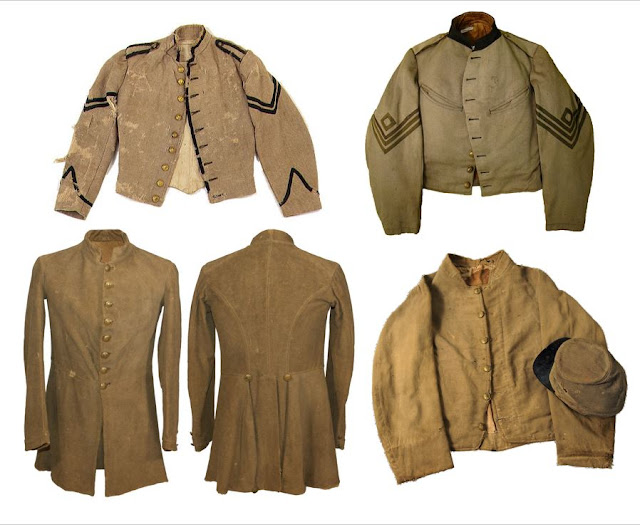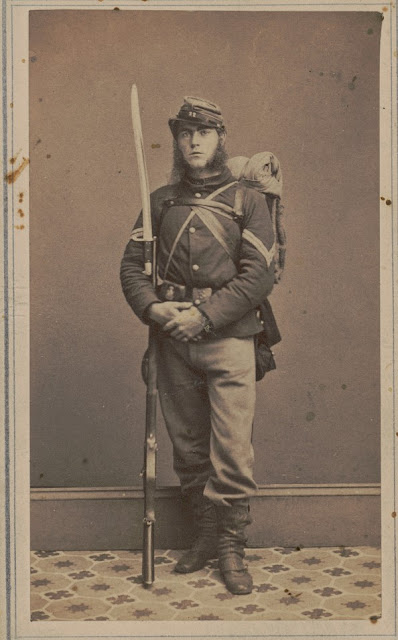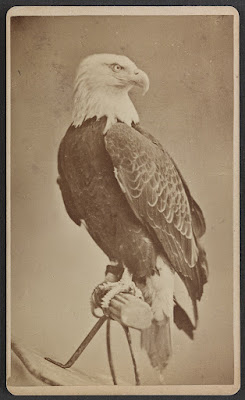Mounted for Monocacy: An Account from the 159th Ohio
Pulled from guard duty at Camp Bradford in Maryland on July 4, 1864, Private Charles Wise and 99 of his comrades of the 159th Ohio were detailed act as mounted infantry to help fend off Jubal Early's invasion of the state.
By July 9th, the detachment found itself on the far right of the Union line at the Battle of Monocacy opened. "The Johnnies formed their skirmishers in line and we did the same. Our company was ordered to advance and formed our line of skirmishers which we occupied until 4 o’clock in the afternoon when were ordered away from our posts by the captain. When we came upon the road, we found ourselves surrounded on all sides by the Johnnies and were cut off from the rest of the command. We knew not what to do, so the captain said, ‘Boys, let’s get out of here.’ We made a charge up the pike and went through the Johnnies and their fire all right and safely without harm. We retreated down the pike on the way to Baltimore. We were ordered to cover the retreat so we had to go back and give the Johnnies another volley. By that time the whole of our men were safely in front of us and we brought up the rear of the column," Wise wrote.
The following letter, a rare account from the 159th Ohio, provides some insights into the days leading up to the Battle of Monocacy. It first saw publication in the July 22, 1864, edition of the Zanesville Daily Courier.
Camp
Bradford, Maryland
July 18, 1864
Dear mother,
It is with the greatest pleasure I now
try to write you a few lines merely to inform you that I am well and safe back
into Camp Bradford again after the three days’ battle at Frederick and Monocacy
Junction. I will give you a description of it as well as I am able.
We received orders on the night of the
4th of July for 100 men to go to Frederick as mounted infantry. A
detail was made from four companies to go: Co. B furnished 40 men, Co. E 20
men, Co. G 20 men, and Co. K 20 men. We were then marched down to headquarters
and received orders to go to the stable and get our horses, bridles, blankets,
and traps. It was 12 o’clock before we received them but we got them at last
and started for Camp Carroll. We got there just at daylight and stayed there
all day Tuesday.
On Wednesday we started for Frederick, marching all day and
until late in the evening when we camped in the woods, staying until morning.
Then we started again through the dust and scorching sun, reaching Frederick
just in time to go into the fight. We fought them until dark when we retired
from the field of action, laying on our arms all night ready for any emergency
that might occur.
 |
| Major General Lew Wallace |
We slept all night without being disturbed until about 4 in
the morning when we were ordered to fall in and take up the line of battle
which we did. We advanced and were deployed as skirmishers to bring on the
fight; that was the day we made the Johnnies retreat ten miles from Frederick,
but during the night they received reinforcements from Harper’s Ferry. That was
on Friday night and came back upon us Saturday morning with their whole force
numbering, as is estimated by General Lew Wallace, at 50,000 men. He was our
commander during the engagement. Our whole force only numbered 8,000.
The Johnnies formed their skirmishers in line and we did the
same. Our company was ordered to advance and formed our line of skirmishers
which we occupied until 4 o’clock in the afternoon when were ordered away from
our posts by the captain. When we came upon the road, we found ourselves
surrounded on all sides by the Johnnies and were cut off from the rest of the
command. We knew not what to do, so the captain said, ‘Boys, let’s get out of
here.’ We made a charge up the pike and went through the Johnnies and their
fire all right and safely without harm.
We retreated down the pike on the way to Baltimore. We were ordered to cover the retreat so we had to go back and give the Johnnies another volley. By that time the whole of our men were safely in front of us and we brought up the rear of the column. We marched all night until daybreak then halted for about two hours, then started again and reached Ellicott’s Mills about noon. We stayed two days then came on to Baltimore, turned over our horses, and came to Camp Bradford again. We were out 14 days from camp.
To learn
more about the Battle of Monocacy, please check out these posts:
The 144th and 149th Ohio at the Battle of Monocacy
We Had to Run But We Saved the Army: With the Ohio National Guardsmen at Monocacy
Source:
Letter from
Private Charles H. Wine, Co. E, 159th Ohio Volunteer Infantry (National Guard), Zanesville
Daily Courier (Ohio), July 22, 1864, pg. 2











Comments
Post a Comment